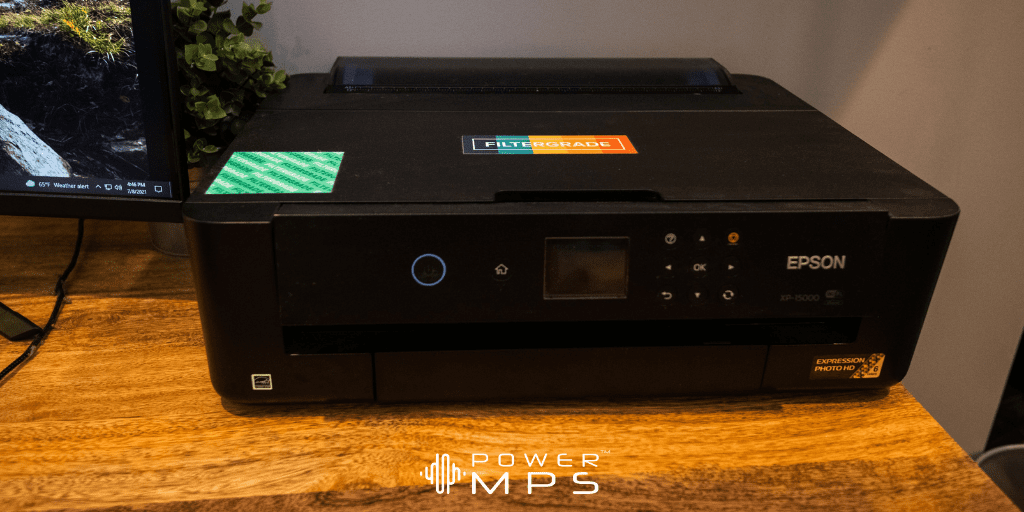It’s no secret that the COVID-19 response of 2020 and 2021 has significantly changed how we live. In many cases, such as with digital payments, online shopping, and mobile banking, it has accelerated adoption by five to ten years. But it is not only digital behaviors that have been affected. The whole pandemic created a drastic upheaval in the perceptions and practices of businesses worldwide. The result is a momentous shift in how we do business and how we print.
Big Changes In Printing
When offices throughout the United States suddenly shut down in March of 2020, how employees would print documents was not usually on the list of concerns. Instead, businesses set up VPNs, scrambled to organize the loan of appropriate computer equipment, and signed up for a range of services to help keep employees in regular communication.
Workers who needed access to print were often left to their own devices, as seen from the massive rush on home printers in late March and early April 2020. Locating a device, paper, or ink in-store or online became nearly impossible and restocks were slow due to supply chain problems, forcing the issue to continue through to early 2021. Like with toilet paper, resellers online took quick advantage of the situation, posting home printers and consumables for sale at astronomically high prices.
But while the home printer was labeled in media as a “come-back kid,” nationwide printing, in general, took a significant downturn. Worldwide, total pages printed dropped 450 billion in 2020, despite at-home inkjet printing seeing a four percent increase. Whether print volumes suffered because people understood they would encounter supply issues or their wariness to absorb additional out-of-pocket costs remains up for debate. But, of those who managed to procure home printers for the pandemic, few printed the volumes they used to print at the office. Moreover, only fifty percent of at-home printing was reported as work-related. Another fifteen percent was for school or education.
Far From Dead
But how much of 2020 was “business as usual” versus survival? The first and second quarters for many companies were a scramble to figure out ways to juggle safety, government requirements, and how to stay afloat. However, once things began to settle down and businesses began to get a clearer picture of how things would continue, it was time to make plans. And those plans include printing.
Recent surveys show companies employing over 500 people are expected to see print volumes return to around seventy-eight percent. Smaller companies with 100 or fewer employees are likely to see printing return between eighty and ninety percent of previous print volumes. In the meantime, the International Data Corporation (IDC) predicts a two percent rebound for laser printing through 2021.
Already, print industry numbers are starting to rally. Nearly three-quarters (74.2%) of printing industry businesses surveyed reported higher sales for the second quarter of 2021. On average, sales were fifteen percent higher than those seen in the heart of the pandemic response in 2020. These numbers are only expected to rise as more and more companies find ways to bring workers back to the office.
An Industry Adjustment
But it’s not all unicorns and rainbows for the printing business ahead. Those companies with more employees are being forced to spend hefty amounts on upgrading their offices. For example, they must change air circulation systems, update desk spacing, and create on-site personnel tracking to meet CDC standards or invest in additional security and technology to make remote work a more permanent feature.
And after seeing the increases in productivity and employee satisfaction, how can these businesses resist the urge to give their workers the option to work remotely more often, or even permanently? More than one business has selected to significantly reduce office size and adopt a “remote-first” policy. IDC predicts these technology and remote work trends will directly affect print volumes. It is estimated that worldwide pages per year will drop to 2.3 trillion by 2025, around 1 trillion fewer pages than were printed pre-pandemic in 2019. However, 1 trillion fewer pages is hardly the death-knell for the printing industry. With over 4.4 million pages printed per minute, there is still a huge opportunity – especially for Managed Print Services (MPS).
Becoming a permanently remote-first or even a hybrid office environment spreads out the IT security net over a much broader range. And, while the VPNs, anti-virus, and firewalls hastily implemented back in Q1 of 2020 were a good start, long-term security means making sure everything hooked into those machines is equally protected. And standard retail printers are far from secure.
The Future Of The Printing Industry
The future of the printing industry, and MPS in particular, is found in a growing professional A3 and A4 printing market. Printer manufacturers have already taken the initiative, producing smaller footprint network printers designed to fit the small and remote office. As a result, IDC anticipates thirty percent of organizations will seek printing contracts that include the remote workforce by 2022.
COVID-19 might have thrown office printing for a loop, shuttering access to large-scale printers and forcing employees to fund their own printing needs. But printed documents are still a necessary part of everyday business. Moreover, as the pandemic slowly makes its way to an endemic classification and workers begin heading back to the office (or not), companies are making plans to address their post-pandemic needs, and this time around, printing is definitely on the agenda.

